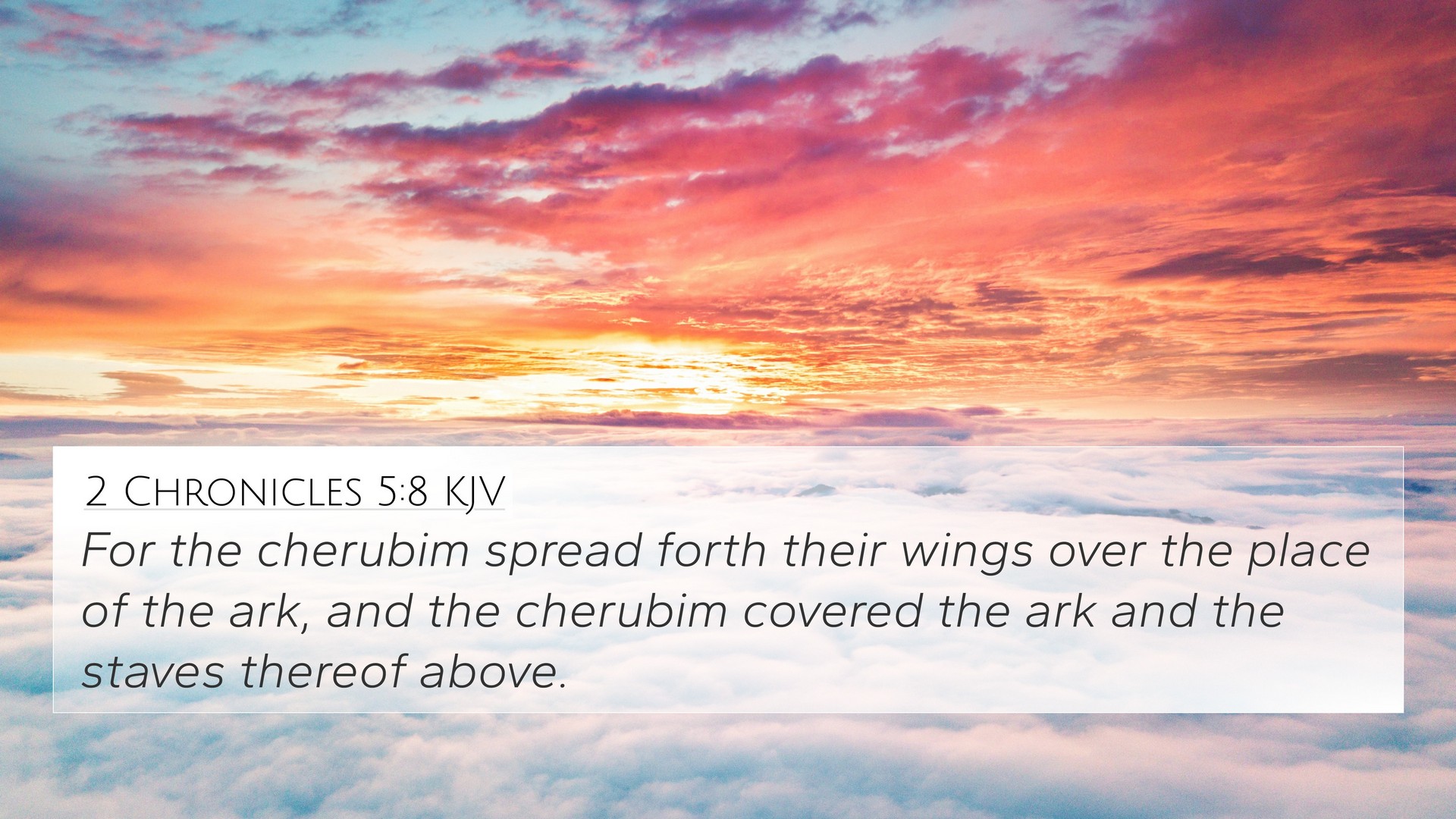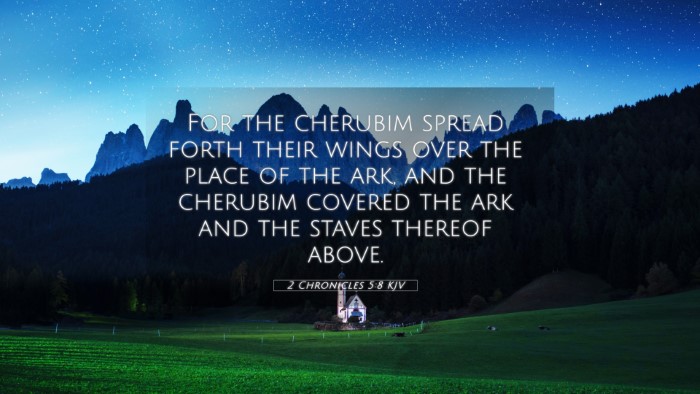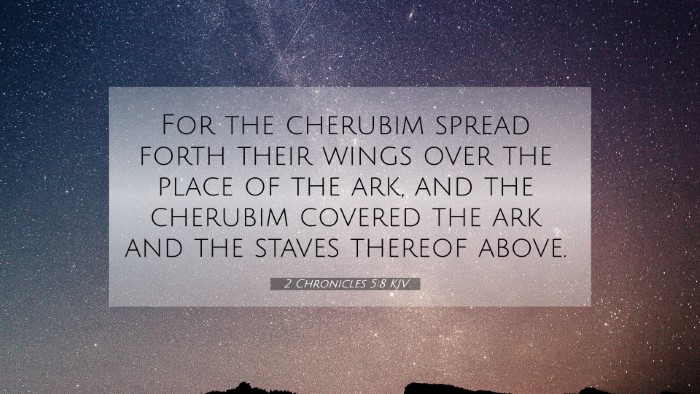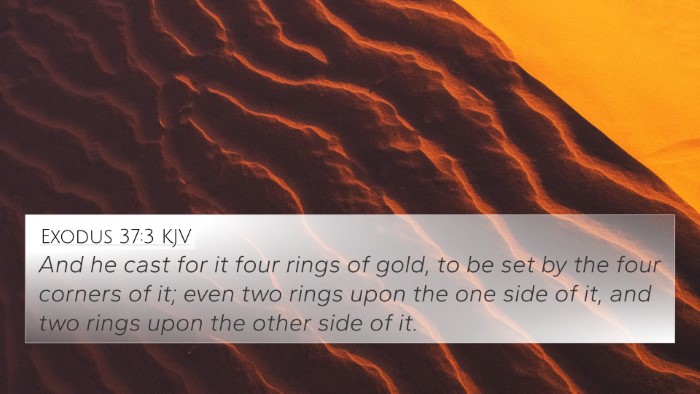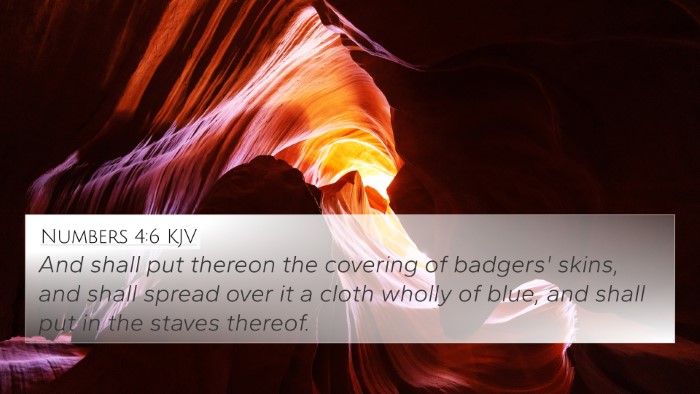Understanding 2 Chronicles 5:8
2 Chronicles 5:8 states: "For the priests brought in the ark of the covenant of the Lord unto his place, to the oracle of the house, to the most holy place, even under the wings of the cherubims." This verse holds significant meanings and implications in the context of Biblical scripture and theology.
Summary of the Verse
This verse describes the event of the Ark of the Covenant being brought into the Temple by the priests. The Ark symbolizes God's presence among His people and serves as a tangible representation of the covenant between God and Israel. The act of placing the Ark within the Most Holy Place, which is covered by the wings of cherubim, illustrates the holiness and reverence associated with God's presence.
Historical Context and Significance
The Ark of the Covenant had a rich history, initially constructed during the time of Moses as detailed in Exodus 25:10-22. It was a central item of worship and held the stone tablets of the Law, symbolizing God's covenant with Israel. The priests' procession to bring the Ark into the Temple marks a significant moment in the religious life of Israel, particularly in the reign of Solomon, as it indicates the culmination of his work in building the temple as a dwelling place for the Lord.
Commentary Insights
- Matthew Henry: Henry emphasizes the importance of the priests' role in bringing the Ark into the Temple as a ceremonial act that signifies God's intimate relationship with His people. He notes that the presence of the Ark served as a reminder of God’s promises and guidance.
- Albert Barnes: Barnes focuses on the symbolism of the cherubim and mentions that they represented God’s angelic presence. He also discusses the significance of the Ark being placed in the Most Holy Place, which reflects God’s holiness and the need for reverence in worship.
- Adam Clarke: Clarke highlights the importance of the temple's dedication and the holiness inherent in the Ark, explaining that the cherubim signify protection and the sacredness required in approaching God. The cherubim's wings covering the Ark symbolize divine protection over God's covenant.
Thematic Connections and Cross-References
The verse connects with various themes throughout the Bible, demonstrating the continuity of God's relationship with humanity, and especially His chosen people Israel. Below are notable cross-references and connections:
- Exodus 25:10-22: This passage describes the construction and significance of the Ark of the Covenant.
- 1 Kings 8:6-7: This verse provides context on bringing the Ark into the temple and highlights the glory of the Lord filling the temple.
- Hebrews 9:4: The author discusses the contents of the Ark, connecting New Testament themes back to the Old Testament practices.
- Psalm 80:1: This Psalm echoes themes of God's presence and protection, analogous to the imagery of the Ark under the cherubim.
- Isaiah 37:16: Acknowledges God's sovereignty and presence, akin to the significance of the Ark as a vessel of God’s authority.
- Revelation 11:19: This New Testament verse speaks of the temple of God and the Ark, linking the past with future eschatology.
- 2 Samuel 6:2: This recounts an earlier event when David brought the Ark into Jerusalem, demonstrating its continual importance in biblical history.
- Micah 6:5: Reflects on the journey of Israel and the role of the Ark, connecting historical insights to prophetic teachings.
Practical Insights for Study
Understanding 2 Chronicles 5:8 in its broader Biblical context can greatly enhance one's study of scripture. Here are some tools and methods for in-depth analysis:
- Bible Concordance: A resource for locating verses that discuss similar themes or words.
- Bible Cross-Reference Guide: A tool to help find related scriptures and deepen understanding.
- Cross-Reference Bible Study: A method that encourages reading multiple verses to identify connections and themes.
- Comparative Study: Assessing similarities and differences between parallel scriptures aids in understanding.
Conclusion
The significance of 2 Chronicles 5:8 extends beyond its immediate historical context. It invites readers to reflect on God's commitment to Israel and the ongoing themes of divine presence, holiness, and covenant in the scripture. Moreover, by employing tools for cross-referencing Biblical texts, believers can deepen their understanding of scripture, how various verses relate to one another, and how God's overarching narrative leads to the New Covenant in Christ.
